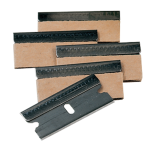Captkingdom
Yamadori
Can anyone point me to a good Japanese grafting knife?




I can't picture how or why you would use the beveled/ chisel tools- I'll see if there's a thread on that.Kanishen grafting Knives, Quality Chisels if working with pines and older azalea, Single sided razor blade for small scion work! With Knives if you do quite bit it is useful to have both the left and right handed versions. Here is my selection which meets most situations.
View attachment 577440
View attachment 577445
View attachment 577441View attachment 577442View attachment 577443
Check out Jonas here https://bonsaitonight.com/2010/03/02/trunk-grafting-black-pine/I can't picture how or why you would use the beveled/ chisel tools- I'll see if there's a thread on that.
Thank you for the posts. @JEads those are what I've used in the past, but if I'm grafting a lot of nursery trees, it can be a bit much. I'll probably stick to those and see if they make handles that would help
The chisels are commonly used for grafting scions on JBP. The ones I use were shaped to match the ones I used when training with Boon. Working with species that have heavier bark require different techniques than very young material with smooth bark. I can understand that they are not needed for common nursery propagation.I can't picture how or why you would use the beveled/ chisel tools- I'll see if there's a thread on that
